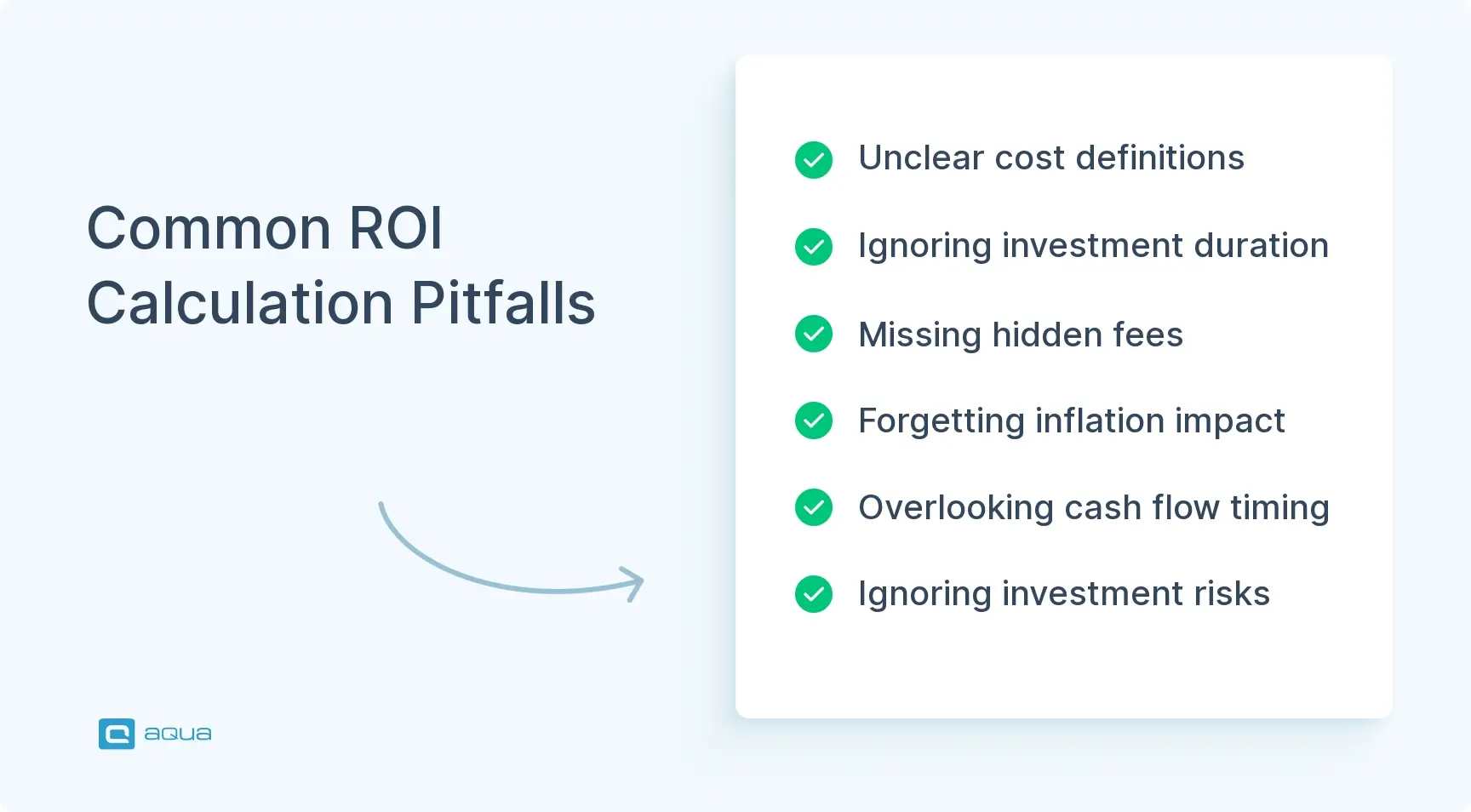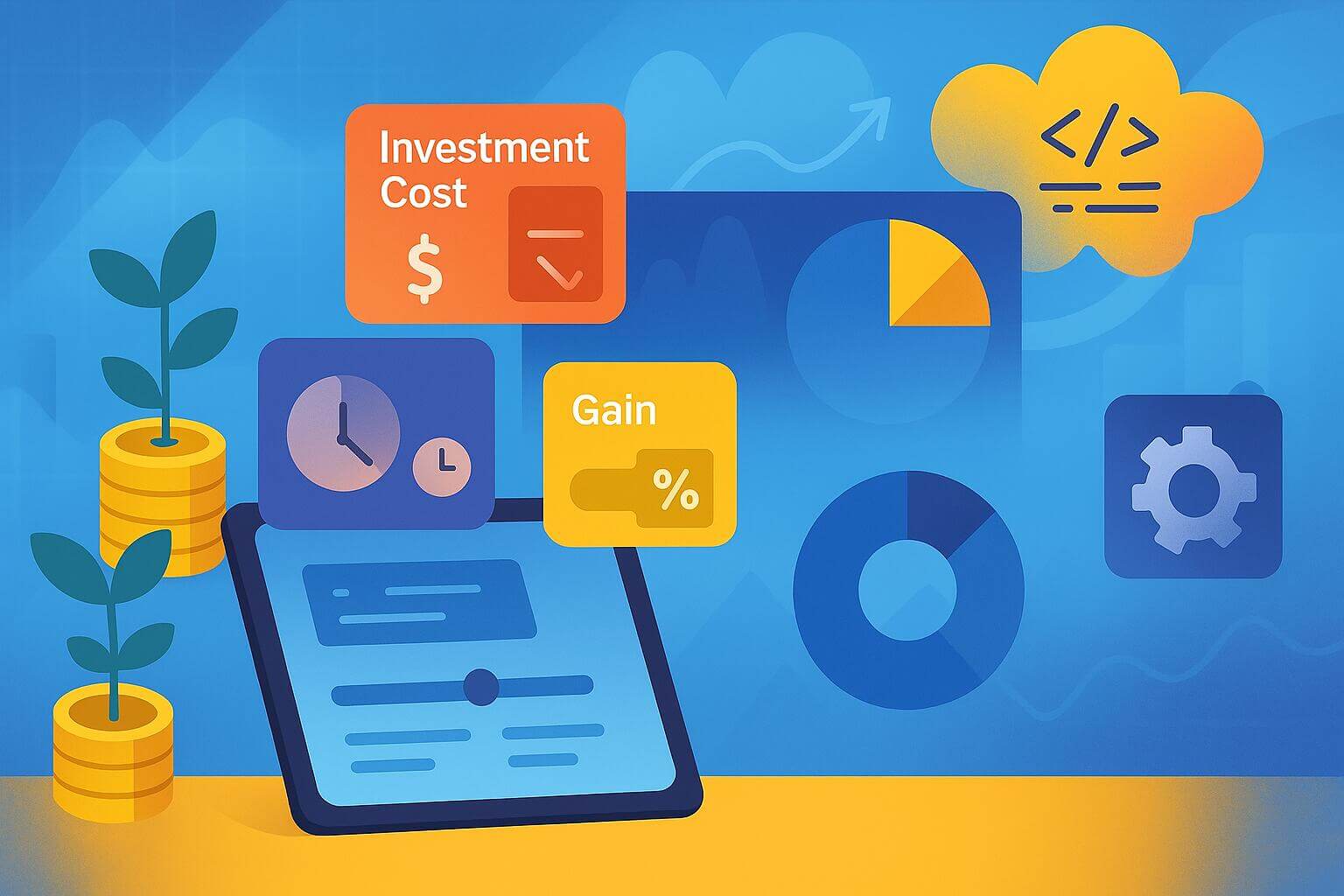aqua Implementation ROI Calculator
Results
Hourly Rate × Monthly Hours Saved $35,200.00
Monthly Savings × Months $844,800.00
Monthly Savings × 12 $422,400.00
Monthly Cost × Months $75,480.00
Total Savings − Total Cost $769,320.00
(Net Benefit ÷ Total Cost) × 100 1,019.24%
If you’re using calculators to evaluate testing ROI, imagine having those and many other insights built directly into your workflow. This is where aqua cloud transforms your approach to quality management. With its comprehensive analytics dashboards and real-time reporting, aqua provides the visibility needed to quantify your testing ROI with precision. Tracking everything from man-hours saved to faster time-to-market. What’s more, aqua’s domain-trained AI Copilot with RAG grounding automates test case creation and documentation, reducing manual design time by up to 43% while ensuring all generated content is deeply relevant to your specific project context. aqua also integrates seamlessly with your existing tools like Jira, Azure DevOps, and Jenkins, so you don’t need to overhaul your workflow. Thousands of QA teams already rely on aqua to maximize their testing returns with built-in AI.
Cut testing costs by up to 43% with aqua cloud
What Is ROI and How It Works?
Return on Investment measures profit against cost. The beauty of this metric is its versatility. Whether you’re getting started, for example, with a new SaaS solution or another software investment. ROI gives you a simple method to evaluate success. A tech startup and a property investor can both use percentages to compare results.
However, you should be aware that ROI ignores risk, taxes, and fees, which are the silent profit killers that compound over time. A simple ROI calculator is your starting point, but the real magic happens when you add time and context to the mix. Many professionals use ROI calculators that are tailored to factor in these additional considerations.
The ROI Calculation Method
ROI calculation requires two inputs: what you gained and what you paid. The basic formula is:
ROI = [(Gain from Investment – Cost of Investment) / Cost of Investment] × 100
Here’s how to calculate it step by step:
Step 1: Identify your gain from investment
Include all cash inflows: dividends, rent, sales proceeds, campaign revenue, time savings, or efficiency gains. For test management solutions, this includes reduced manual effort hours, faster delivery cycles, and decreased defect costs.
Step 2: Calculate your total cost of investment
Add your initial outlay plus all ongoing expenses: subscription fees, implementation costs, training time, maintenance, and any additional tools or integrations needed.
Step 3: Apply the formula
Subtract total cost from total gain, divide by total cost, then multiply by 100 to get your ROI percentage.
Step 4: Verify your inputs
To calculate rate of return on investment accurately, you need to be meticulous about including all relevant costs and gains. Did you count opportunity cost? Are you including transaction fees or hidden fees? Miss one line item, and your ROI calculation becomes unreliable.
Example calculation:
If you invest $75,480 in a test management platform like aqua and save $844,800 over 24 months:
- Gain: $844,800
- Cost: $75,480
- ROI = [($844,800 – $75,480) / $75,480] × 100 = 1,019.24%
Practical Applications of ROI Calculators
ROI calculators help evaluate investments across different scenarios. Individuals compare savings accounts against dividend ETFs or mortgage prepayment versus equity investments. Businesses use them for capital budgeting, marketing optimization, and training program justification.
SaaS Product Implementation
Consider a company that evaluates a customer onboarding automation project. Upfront development and tool costs hit €50,000. The team estimates the new flow will reduce support tickets by 30%, saving €20,000 per year, and lift conversion by 5%, adding €15,000 annual recurring revenue. Plug those into an ROI calculator online with a three-year horizon, and you get an annualized return of roughly 23%. But what if adoption takes twice as long or churn offsets the gains? Adjust the inputs, rerun the numbers, and you face a 9% return. That delta of 14 percentage points represents the value of scenario modeling.
Marketing Budget Allocation
You allocate €100,000 across three channels: search, social, and events. A robust calculator factors in direct revenue attribution, carryover effects (brand lift that converts later), and incremental reach (new audiences you wouldn’t have reached otherwise). Nielsen’s 2024 research shows marketers who rely on single-channel ROI often over-concentrate spend and miss full-funnel gains. A good ROI tool surfaces those blind spots by modeling contribution across the customer journey rather than just the last click. The result? Smarter budget allocation and fewer dollars wasted on diminishing returns.
Common Challenges in Using ROI Calculations

ROI calculations may confuse even seasoned professionals when assumptions go unquestioned. Here are several common pitfalls that can distort your results and lead to poor investment decisions:
- Inconsistent definitions: Different teams define “cost” and “gain” differently. One calculation might include all expenses, while another conveniently ignores platform fees, making a 12% ROI seem worse than a 15% figure that’s actually less comprehensive.
- Ignoring time: Basic ROI treats a 30% return over five years the same as 30% in one year. Without annualization, you miss that an 8% annual index fund return would compound to 47% over the same period.
- Hidden fees and taxes: A 10% gross return becomes 7% after a 1.5% annual fee and 25% capital gains tax. These frictions compound over time and can cut your actual returns in half.
- Inflation blindness: A 6% nominal ROI in a 3% inflation environment delivers only 3% in real purchasing power. Always calculate both nominal and real returns.
- Cash-flow timing: Deposits and withdrawals skew results. Use time-weighted returns for asset evaluation and money-weighted returns (IRR) for personal outcomes.
- Risk blindness: Two investments with identical ROIs but different volatility are not equal. Layer in Sharpe ratios or risk scores to account for this.
Just as an ROI calculator transforms raw data into actionable insights, aqua cloud test management platform can do the same for your QA processes. This AI-driven solution gives you the metrics and visibility to uncover the true value of your testing investment. Customizable dashboards that visualize time savings and defect resolution rates in real-time are included. Instead of spending hours manually creating test cases and documentation, you can use aqua’s AI Copilot that leverages Retrieval-Augmented Generation to instantly generate project-specific testing assets from text, documentation, or even voice notes. Aside from workflow automation, aqua can offer native integrations with tools like Jira and Azure DevOps, The platform also supports enterprise-grade security compliance. aqua cloud changes the way you measure and demonstrate the value of quality in your organization.
Make testing a powerful value driver with aqua's AI-powered analytics
Conclusion
ROI calculators transform vague financial hunches into quantifiable insights. They give you the clarity to back winners and avoid poor investments before they drain your resources. The key is choosing the right calculation method for your question: time-weighted for manager evaluation, IRR for project outcomes, and risk-adjusted metrics when volatility matters. Ready to evaluate your testing investment? Use aqua’s ROI calculator to assess the potential returns from using our test management solution. Input your team parameters and see concrete projections for time savings, cost reductions, and efficiency gains. Make your data-backed decision today.


















